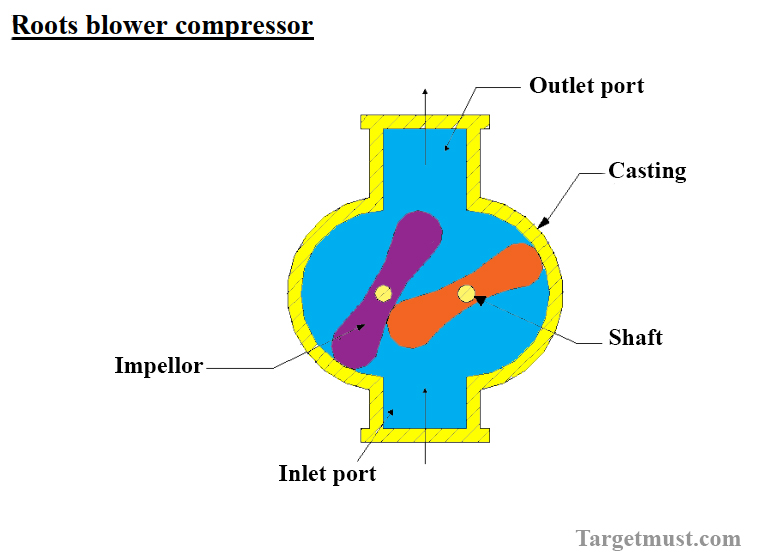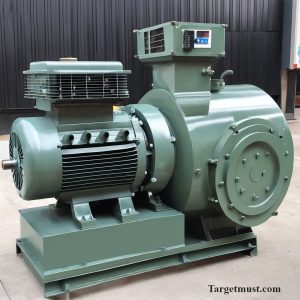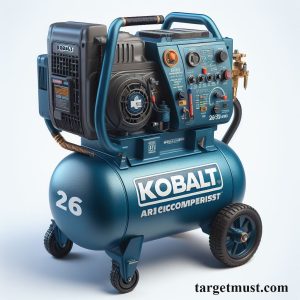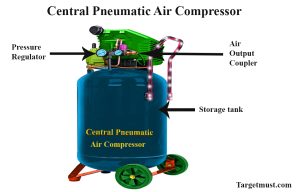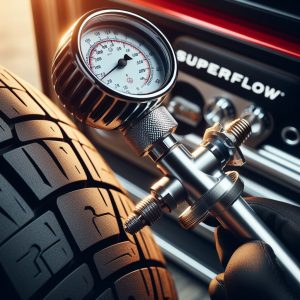Roots Blower Compressor
The Roots blower is a valveless displacement compressor with no internal compression.
Blowers are generally air-cooled and oil-free. Although two- and three-stage versions are available, their low efficiency limits these blowers to very low-pressure applications and single-stage compression. Roots blowers are often used for vacuum pumps and pneumatic conveying.
Key Highlights
- Roots blowers are a type of positive displacement (PD) blower that have been around for over 150 years.
- These blowers are ideal for applications that require variable flow and pressure.
- The primary advancement in lobe technology over the years has been focused on noise reduction.
- Roots blowers are typically oil-free and air-cooled technologies.
- They are frequently used as vacuum pumps and for pneumatic conveyance.
- Roots blowers have low efficiency and high noise levels compared to other types of compressors.
Introduction
Roots blowers, also known as lobe blowers, are a type of positive displacement (PD) blower that have been in use for over 150 years. These blowers operate on the principle of displacement compression, making them ideal for applications that require variable flow and pressure. The primary focus of innovation in roots blower technology has been on noise reduction rather than improving efficiency.
The roots blower compressor consists of two identical, usually symmetrical, counter-rotating rotors that work in a housing, synchronized by means of a set of gear wheels. These blowers are typically oil-free and air-cooled, making them suitable for a wide range of applications. They are widely used as vacuum pumps and for pneumatic conveyance.
One of the key characteristics of roots blowers is their low efficiency compared to other types of compressors. This limits their use to applications requiring very low pressure and single-stage compression. Despite their lower efficiency, roots blowers are popular due to their reliability, low noise levels, and ability to handle variable flow and pressure requirements.
In this blog, we will explore the mechanics of , including their principle of operation and key components. We will also discuss the advantages of using roots blowers, their common applications, and important technical specifications to consider. Additionally, we will provide installation and maintenance best practices, as well as troubleshooting tips for common issues.
The Mechanics of Roots Blower Compressors
Roots blowers, classified as a type of positive displacement (PD) blower, function based on the concept of displacement compression. These blowers are comprised of two rotors that rotate in opposing directions within a housing. During operation, air is sucked into the compression chamber as the rotors revolve, and it gets compressed as the chamber’s volume diminishes. The compressed air subsequently returns to the housing from the pressure side for additional compression. Notably, this compression transpires against full counter-pressure, leading to low efficiency levels and generating high noise levels.
Roots blowers find applications across various industries due to their ability to deliver consistent airflow at constant pressure levels. They are commonly used in wastewater treatment plants, pneumatic conveying systems, and industrial vacuum applications. Despite their drawbacks in terms of efficiency and noise levels, roots blowers remain a popular choice for applications requiring continuous and reliable airflow. Manufacturers are continuously working on innovations to improve the efficiency and reduce the noise produced by roots blowers to make them more environmentally friendly and sustainable for different industrial processes.
The Principle of Operation
The principle of operation of roots blowers involves the movement of air through a compression chamber. As the rotors of the blower spin, air is drawn into the chamber through the inlet port. The rotors then compress the air by reducing the volume of the chamber. This continuous rotation and compression process result in the generation of a low-pressure air flow. It’s important to note that roots blowers do not have internal compression, and the compression occurs against full counter-pressure. This limits their efficiency and makes them suitable for applications requiring very low pressure and single-stage compression.
Key Components and Their Functions
Roots blowers consist of several key components that work together to facilitate the compression and movement of air. The main components include the rotors, housing, inlet port, outlet port, and compression chamber.
- The rotors are the central components of the roots blower and are typically identical and counter-rotating. They are responsible for drawing in air, compressing it, and moving it through the blower.
- The housing holds the rotors in place and provides a controlled environment for the compression process.
- The inlet port allows air to enter the blower, while the outlet port allows compressed air to exit. These ports ensure the proper flow of air through the blower.
- The compression chamber is the space between the rotors where the air is compressed. It decreases in volume as the rotors rotate, resulting in the compression of the air.
- Each of these components plays a crucial role in the overall operation of the roots blower, ensuring the effective compression and movement of air.
Advantages of Using Roots Blower Compressors
Roots blowers offer several advantages that make them a popular choice in various industries. One of the key advantages is their ability to handle variable flow and pressure requirements, making them ideal for applications that require flexibility. Additionally, roots blowers are known for their low noise levels, making them suitable for environments where noise reduction is a priority. They are also reliable and have low maintenance requirements, providing long-lasting performance. Furthermore, roots blowers are commonly used in pneumatic conveyance applications due to their positive displacement technology.
Efficiency in Varied Applications
While roots blowers have lower efficiency compared to other types of compressors, they offer advantages in specific applications. One such application is pneumatic conveyance, where roots blowers excel due to their positive displacement technology. They provide consistent and reliable airflow, making them suitable for conveying bulk materials in industries such as cement, food processing, and wastewater treatment.
Roots blowers are also used in vacuum boosters, where they assist in improving the performance and efficiency of vacuum systems. They are commonly employed in gas applications where a low-pressure air flow is required, such as in the oil and gas industry.
Despite their low efficiency, roots blowers have found their place in various industries due to their unique advantages in specific applications. Their ability to handle variable flow and pressure requirements and their reliability make them a valuable asset in many industrial processes.
Durability and Low Maintenance Requirements
Roots blowers are known for their durability and low maintenance requirements. Due to their simple design and fewer moving parts, they are less prone to breakdowns and require minimal maintenance. The absence of oil in their operation makes them suitable for applications where oil contamination is a concern. This also eliminates the need for regular oil changes and reduces the overall maintenance requirements.
Additionally, roots blowers are designed for long-lasting performance, with many units lasting for decades when properly maintained. This makes them a cost-effective choice for industries that require reliable and consistent airflow. By investing in roots blowers, businesses can reduce downtime and maintenance costs, resulting in increased productivity and efficiency.
Common Applications of Roots Blower Compressors
Roots blowers find wide-ranging applications across various industries due to their unique characteristics. One of the common applications is pneumatic conveying, where roots blowers are used to transport bulk materials in industries such as cement, food processing, and wastewater treatment. They are also utilized in industrial processes that require low-pressure air flow, such as aeration, combustion, and gas applications.
In addition, roots blowers are commonly used in environmental and waste water treatment applications, where they play a crucial role in processes such as aeration and agitation. Their positive displacement technology ensures consistent airflow, making them an essential component in these applications.
Industrial Use Cases
In industrial settings, roots blowers are used in a wide range of processes that require low-pressure air flow. One common use case is in pneumatic conveying systems, where roots blowers transport bulk materials such as grain, cement, and powders. Their positive displacement technology enables them to provide a consistent and reliable airflow, ensuring efficient material transportation.
Roots blowers are also utilized as air pumps in various industrial applications, including wastewater treatment, aeration systems, and combustion processes. They are frequently used in environmental and waste water treatment plants for aeration and agitation purposes. In combustion processes, roots blowers provide the necessary air flow for efficient fuel combustion.
Overall, roots blowers play a vital role in industrial processes that require low-pressure air flow, providing reliable and efficient performance.
Environmental and Waste Water Treatment
Roots blowers are widely used in environmental and waste water treatment applications due to their ability to provide consistent and reliable airflow. In wastewater treatment plants, roots blowers are commonly used for aeration purposes. They supply air to the treatment tanks, ensuring sufficient oxygen levels for the breakdown of organic matter by bacteria. The positive displacement technology of roots blowers ensures consistent airflow, contributing to the efficiency of the treatment process.
In addition to aeration, roots blowers are also used in agitation processes in waste water treatment. They help to mix and circulate the wastewater, promoting the effective distribution of chemicals and ensuring thorough treatment.
Overall, roots blowers play a crucial role in environmental and waste water treatment, providing the necessary air flow for aeration and agitation processes.
Technical Specifications to Consider
When choosing a roots blower compressor, there are several technical specifications to consider. Two of the most important specifications are volume flow rates and pressure ratios. Volume flow rate refers to the amount of air that the blower can move in a given period, typically measured in cubic feet per minute (CFM) or cubic meters per hour (m³/h). These specifications determine the performance capabilities of the roots blower compressor and should be carefully evaluated based on the specific requirements of the application.
Volume Flow Rates and Pressure Ratios
Volume flow rates and pressure ratios are important technical specifications for roots blower compressors. The volume flow rate indicates the amount of air that the blower can move in a given period, typically measured in cubic feet per minute (CFM) or cubic meters per hour (m³/h). This specification determines the capacity of the blower and its ability to meet the airflow requirements of the application.
It indicates the blower’s ability to increase the pressure of the air being compressed. Higher pressure ratios are required for applications that require higher pressure levels.
Both volume flow rates and pressure ratios should be carefully considered when selecting a roots blower compressor to ensure that it meets the specific performance requirements of the application.
Material and Design Considerations
The material and design of roots blowers are important considerations for their performance and durability. The housing, rotors, and other components should be made from high-quality materials that can withstand the demands of the application.
The housing, typically made from cast iron or steel, provides structural support and helps minimize noise and vibration. The rotors are often made from cast steel or alloy steel to withstand the rotational forces and maintain their shape over time.
In addition to material considerations, the design of the roots blower should be optimized for efficient airflow and minimal energy loss. It should be carefully engineered to reduce leakage and maximize the compression efficiency.
Material and design considerations play a crucial role in the overall performance and reliability of roots blowers, ensuring long-lasting and efficient operation.
Text table:
|
Component |
Material |
|
Housing |
Cast iron/steel |
|
Rotors |
Cast steel/alloy |
|
Inlet/outlet port |
Stainless steel |
|
Compression chamber |
Cast iron/alloy |
Installation and Maintenance Best Practices
Proper installation and maintenance are essential for ensuring the optimal performance and longevity of roots blower compressors. Following industry best practices can help prevent breakdowns, reduce downtime, and extend the lifespan of the equipment.
Installation Guidelines
During installation, roots blower compressors should be positioned on a solid foundation to minimize vibration and ensure stability. Proper alignment of the blower and the connected equipment is crucial for smooth operation. All connections, including those for air intake and discharge, should be secure and free from leaks to maintain proper airflow.
Routine Maintenance Tips
Regular maintenance is key to keeping roots blower compressors in optimal condition. This includes routine inspections, cleaning, and lubrication of the components. Lubrication is particularly important to ensure smooth operation and reduce wear and tear on the rotors and other moving parts.
Troubleshooting Common Issues
Despite proper installation and maintenance, roots blower compressors may encounter common issues. Understanding how to troubleshoot these issues can help minimize downtime and prevent further damage.
Identifying Symptoms of Malfunctions
Common symptoms of malfunctioning roots blower compressors include unusual noise levels, reduced airflow, and increased energy consumption. These signs may indicate issues such as worn-out or damaged components, air leaks, or improper lubrication.
Quick Fixes and When to Seek Professional Help
For minor issues such as air leaks or loose connections, quick fixes can be performed by tightening connections or replacing faulty seals. However, for more complex issues or major malfunctions, it is recommended to seek professional help. Trained technicians can diagnose and repair the root cause of the problem, ensuring the proper functioning of the roots blower compressor.
Readmore >>>>>>>>>>>> Working principle of centrifugal air compressor
Conclusion
Roots blower compressors offer exceptional efficiency and durability for a wide range of industrial applications. With low maintenance requirements and high reliability, they are a preferred choice in environmental and wastewater treatment processes. Understanding the mechanics and technical specifications of these compressors is crucial for optimal performance. By following installation and maintenance best practices, you can ensure smooth operation and troubleshoot common issues effectively. Whether for industrial use cases or specialized applications, roots blower compressors stand out for their unique advantages and design considerations. Delve into the world of roots blower compressors to discover their unparalleled benefits in various industries.
Frequently Asked Questions
What Makes Roots Blower Compressors Different from Other Types?
Roots blowers are a type of positive displacement blower that operate on the principle of displacement compression. They have lower efficiency compared to other types of compressors but offer unique advantages in applications that require variable flow and pressure.
How Can I Determine the Right Size and Model for My Needs?
The right size and model of roots blower compressor can be determined based on the specific requirements of the application. Consider factors such as volume flow rates, pressure ratios, and the type of application to select the appropriate size and model.
What is a roots blower compressor and how does it work?
A roots blower compressor is a type of positive displacement blower that operates by compressing air in a compression chamber using two counter-rotating rotors. It is commonly used for pneumatic conveyance and vacuum applications.
What are the main applications of roots blower compressors?
Roots blowers find applications in pneumatic conveying, industrial processes requiring low-pressure air flow, and environmental and waste water treatment. They are commonly used in industries such as cement, food processing, and oil and gas.
How does a roots blower compressor differ from other types of compressors?
Roots blowers are a type of positive displacement blower that operate on the principle of displacement compression. They have lower efficiency compared to other types of compressors but offer advantages such as variable flow and pressure capabilities.
What are the key components of a roots blower compressor system?
The main components of a blower are two propellers (also called rotors or lobes). These propellers rotate in opposite directions. As they rotate, a certain amount of gas gets trapped between the impeller and the casing on the intake side.

